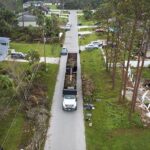
Data Accurately Guides a Membership Model Update
It’s not enough to think you know what your members want in a new membership model. Sometimes it takes a deeper dive to reveal what’s working and what’s not, which makes the path to increased value and better benefits clearer.
It turns out data really does tell the story. That was true for the Emergency Nurses Association (ENA) when a member needs assessment asked members whether the current member structure was working for them. The survey revealed that the one-size-fits-all model was working for the majority of ENA’s members, but there were demographic groups that expressed an interest in alternative models.
Pricing for Younger Members
For example, members who were newer to the emergency nursing profession—“emerging professionals,” which ENA defines as having five years or less experience—and its under-30 group had a significant interest in a graduated dues model because those groups are more recently out of school and earlier in their careers.
Nearly 50 percent of ENA’s membership is under age 40. “That’s definitely something we want to take under advisement and look into given our membership skews younger organically because of the nature of emergency nursing,” said Matthew Hessler, CAE, ENA’s director of member engagement. The profession has a higher burnout rate than other nursing specialties due to the stresses of the job.
The data also showed that no matter what age the nurses were, an overwhelming majority were paying for their own education and their own dues. ENA noticed that shift after its 2018 survey, which revealed that more hospitals are not paying for continuing education. Eighty percent of its members across all demographics are paying their own way, which means ENA staff has to take that into account when they price products and membership.
Is It Value or Cost?
ENA worked with a consultant on the needs assessment and added a couple of branches at the end of the survey both for membership and educational products. A certain portion of the membership got a question specifically about member structure and pricing. They used the Van Westendorp Price Sensitivity Model to gauge pricing sensitivity.
“The real goal was to understand if we have a membership value problem or a membership cost problem, which informs how we would make the decision on the model,” Hessler said.
They found that their pricing falls right between the bargain and expensive pricing points. “We didn’t see pricing as an issue,” Hessler said. “We do see the value of our membership as an issue, and that’s where we’re focused in terms of professional development and using the survey data to identify opportunities for new benefits.”
Data Over Instincts
Throughout the membership model process, Hessler said he came to several conclusions based on assumptions, which the data caused him to reset. “You need to go with your data and what your members are telling you, even if your instincts inform you something else.” He said it’s important to take that member feedback and implement it, but it’s also essential to have the right internal people involved in the process.
ENA has several emergency nurses on staff. “I want to make sure when we get to the point of presenting concepts and changes, we bring those folks into the room,” he said. “We want to make sure we have their input and buy-in and hear their concerns because they’re as close to our members as we can get.”
The process is ongoing. They are still refining tweaks and recommendations to the membership model and identifying value pieces they know they need to work on and prioritizing those based on the data, which is where the needs assessment has been so valuable. “That will definitely help us as we move forward,” Hessler said.






Comments